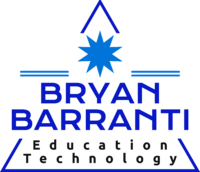In an age where information flows at an unprecedented rate, the ability to evaluate sources and claims is more critical than ever. Having graduated from high school in 1990, I experienced firsthand the shift from traditional research methods to the digital world. In those days, researching meant physically going to a library, flipping through card catalogs, and searching for books and journal articles. If I needed more information, I had to track down an encyclopedia or ask a librarian for guidance.
When the internet arrived, everything changed. I remember the early days of dial-up modems, the screeching sound of a connection being established, and the sheer excitement of accessing information without leaving the house. Before Google became dominant, we relied on search engines like Yahoo!, Fetch, AltaVista, Lycos, and Ask Jeeves, each with its own quirks and limitations. Back then, search results weren’t always ranked by relevance, and filtering through pages of unrelated links was a common frustration. Despite these challenges, the internet felt like a revolutionary tool—one that promised quick and easy access to knowledge.
Fast forward to today, and while access to information has never been easier, the challenge has shifted from finding information to verifying it. Unlike a library, where sources had already been vetted for credibility, the internet presents information without any built-in quality control. Anyone can publish anything, and it’s up to the reader to determine its validity.
Mike Caulfield, co-author of Verified and creator of the SIFT method, has spent years studying how misinformation spreads and how people can better navigate the digital world. His approach isn’t about memorizing lists of reliable sources but rather about developing habits of critical inquiry that can be applied to any information encountered online.
Caulfield’s work shows that students often assume Google functions as a highly curated database, leading them to trust the first result without questioning its credibility. To counteract this, he developed the SIFT method, a simple but powerful approach:
- Stop – Before engaging, ask if the source is what you think it is.
- Investigate the Source – Consider why the source has authority on the topic.
- Find Better Coverage – Look beyond the first link to more reputable sources.
- Trace Back to the Original – Ensure claims haven’t been altered or taken out of context.
Misinformation today isn’t just about fabricating false content; it often involves repackaging real information in misleading ways. Whether it’s a cropped image, a selectively edited video, or a quote stripped of its original meaning, much of today’s misinformation relies on the removal of critical context.
In my own teaching, I emphasize the importance of verifying sources by requiring students to find at least three sources that align before trusting information. Initially, they resist this, wanting to use the first thing they find, assuming that if it looks official, it must be true. To challenge this, I introduce examples like the Pacific Northwest Tree Octopus—a well-crafted hoax that claims a species of tree-dwelling octopuses exist. When students take it at face value, it seems credible, but as they dig deeper, they realize how easily misinformation can spread.
Another example I sometimes use is the House Hippo, a Canadian PSA that shows a tiny hippo living in a home, presented in a style similar to wildlife documentaries. It’s a memorable way to highlight how visual storytelling can make misinformation seem more convincing. Once students recognize that their initial instinct to believe was flawed, they become more open to questioning sources and verifying claims.
Artificial intelligence is now complicating this landscape further. While AI struggles with factual accuracy, it excels at mimicking reasoning structures. Caulfield has experimented with AI models that analyze arguments and identify gaps in logic. These tools show promise, but they also highlight the increasing importance of teaching reasoning skills—not just the ability to fact-check, but the ability to analyze how and why an argument is structured in a certain way.
Another major concern is the attention economy. As Caulfield notes, “information consumes attention,” meaning that the real challenge isn’t a lack of information but an overwhelming flood of it. Social media algorithms reinforce confirmation bias by presenting endless streams of content that align with what users already believe, making it difficult to engage with differing perspectives. Instead of engaging in thoughtful dialogue, people end up in echo chambers, reinforcing their existing beliefs while dismissing opposing viewpoints outright.
One of the most thought-provoking ideas from Caulfield’s discussion is critical ignoring—the idea that managing one’s information diet is just as important as fact-checking. Instead of collecting endless low-quality evidence to confirm an existing belief, individuals need to practice filtering out unreliable information and knowing when to step back from the constant firehose of online content.
Reflecting on how digital literacy has evolved, I can see how my own experiences have shaped my approach to teaching these skills. I grew up in an era where information was slower to access but inherently more vetted. Now, my students have instant access to endless content, but they must develop the ability to filter, question, and validate it. Whether it’s teaching them about misinformation through hoaxes like the tree octopus or helping them adopt strategies like SIFT, my goal is to prepare them to think critically about the information they encounter.
In an era of AI, misinformation, and algorithm-driven news feeds, digital literacy must go beyond simple fact-checking. It requires an intentional approach to evaluating sources, understanding reasoning structures, and managing one’s own attention. The skills that will matter most in the future won’t be the ability to memorize facts but the ability to think critically, ask the right questions, and determine when information is worth engaging with at all.
